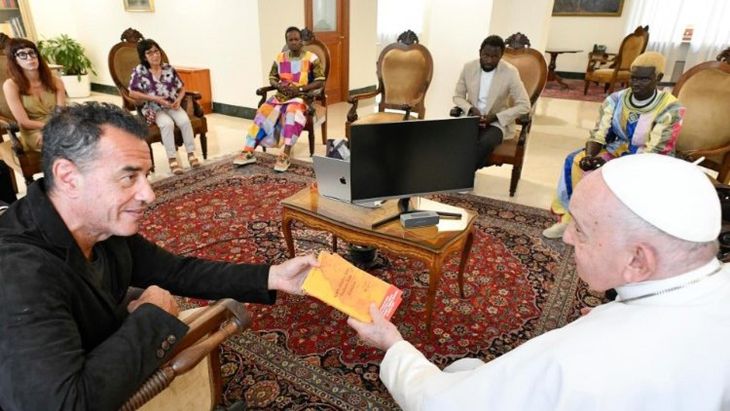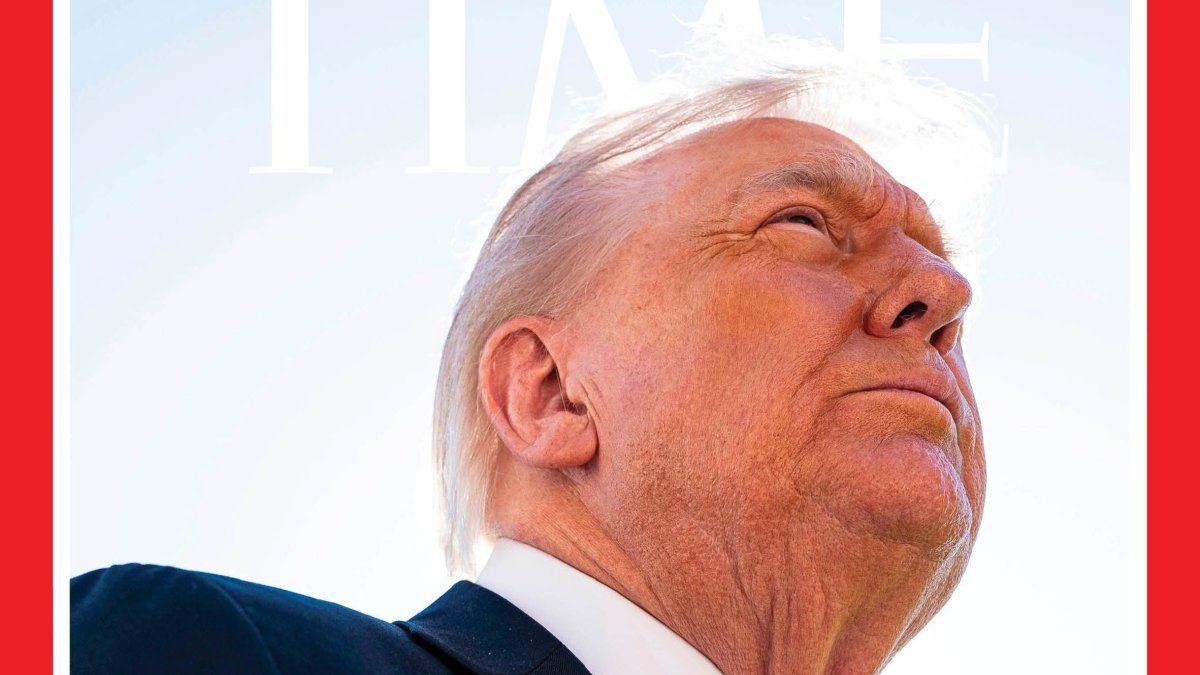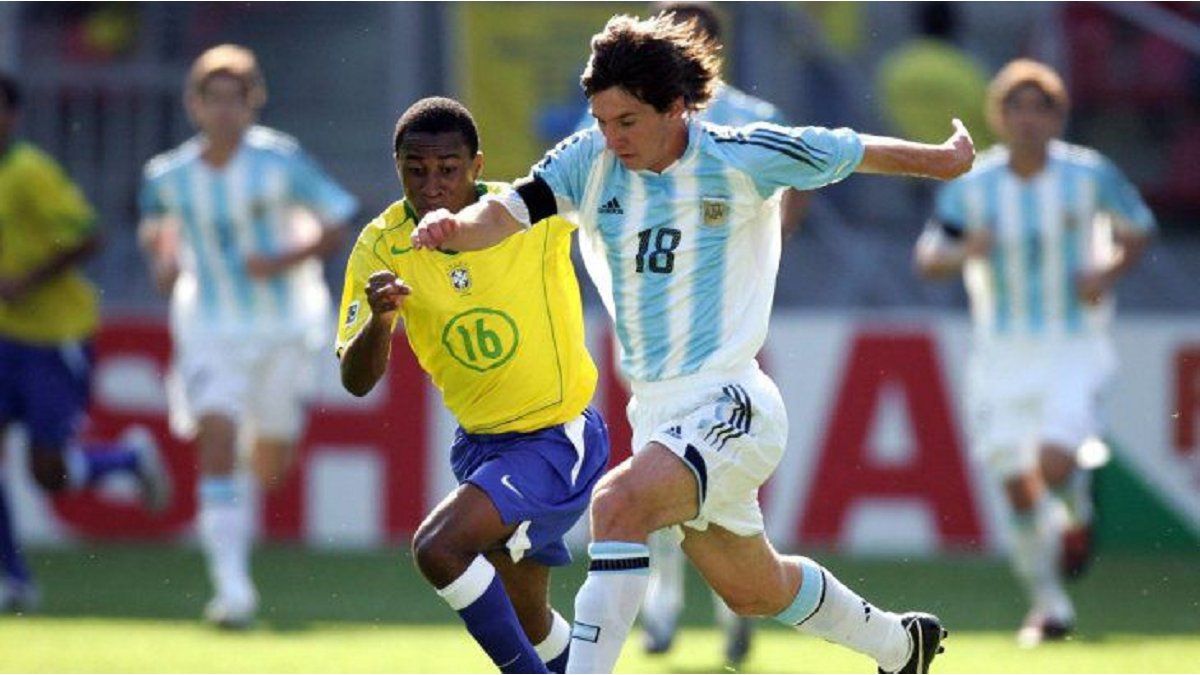Cinema lover and declared a personal friend of Martin Scorseseon February 17 the Pope Francis He had willing to visit Cinecittà, to celebrate the jubilee of the artists there. It would have been the first pontiff to step on that temple of the cinema, but instead he had to enter the Hospital of Gemelli. The rest is already news. The interesting thing here is to review that love of his for the cinema.
Let’s start by March 2013. Cardinal Jorge Mario Bergoglio I was about to see the comedy of Nanni Moretti “Habemus Papam”When they called him urgently from the Vatican to participate in the choice of who would be the successor of Benedict XVI. It was said “I will see her when I return”, but in the end he saw her there in Rome, several months later. He told this himself, when asked about his relationship with the cinema.
In those circumstances, he remembered the films that marked him when a child in a flower cinema that no longer exists, all Italians, which was what he saw most, as a good son of Italians, Piedoles for more data. “I think I saw all the films of Anna Magnani and Aldo Fabrizi”he said, both the comic and the tremendous “Rome, open city”of Roberto Rossellinione of the summits of Neorealism, inspired by real characters such as the priest Giuseppe Morosinimember of the tortured resistance and shot by the Nazis a few months before the end of the war.
Fan from San Lorenzo de Almagro since the age of 9, it is logical that his favorite Argentine films were, for a long time, “Rag ball”of Torres Ríos (“tells the story of children who play on the street, in the wasteland, and have fun with what they have, although they dream of having a real, leather ball one day”), And, in particular, “The priest Lorenzo”of Augusto Vatteoneabout the priest Lorenzo Mazzacreator of a children’s club in the parish of Almagro, when that was a andurrial. Then, when putting a name to that club, the boys themselves sanctified the pastor. That is the origin of San Lorenzo de Almagro and the film, luckily, is still quite good.
At 18 Bergoglio discovered “La Strada”of Federico Fellini, “maybe the movie that I liked the most when I was young”and repeated the dialogue of Richard Basehartthe clown, with Giulietta Masina: “Everything in this world is useful for something. I don’t know what this stone is for, but for something it has to serve. Also the stars. And also you, you also serve for something with how silly you are”.
He used that film in his Buenos Aires catechesis, and also “Children look at us”of Vittorio de Sicawhen I had parents’ meetings, “Rhapsody in August”of Akira Kurosawaemphasizing the relationship of grandparents and grandchildren, and “Andrei Rublev”of Andrei TarkovskYo. “It makes you think about what is happening in the world today. Rublev no longer paints and does not even speak. Lost wandering until the replacement of a bell feels. And to the first sound of that bell his heart opens again, his tongue loosen, he speaks again, he will paint again. And the screen is filled with the colors of his works.”
Garrone.jpeg
Pope Francis with director Matteo Garrone, of “I Captain”, about illegal African immigrants in Italy. The film had its premiere in the Vatican
There is something else: Francisco It was the first Pope who put an example a film in an apostolic exhortation, the “Amoris Laetitia”. This is the paragraph: “The most intense joys of life are born when we can seek the happiness of others, in an anticipation of heaven. You have to remember the happy scene of the movie ‘La Fiesta de Babette’, where the generous cook receives a grateful hug and a praise: ‘How you will delight Los Angeles!’. At the time, that single mention was enough to refloat before the public the film, very pleasant, of Gabriel Axel And the story of Karen Blixen What is based on.
There are others, such as “Life is beautiful”of Roberto Benignibut one of the last titles that the Pope Francis He stood out enthusiastically “Io Capitano”(I, captain), of Matteo Garronepowerful story of the adventure of some African young people who crossed the desert and the sea in search of a better future. The film was projected as a premiere in the Vatican, and together with the Pope and the director was Mamadou Kouassione of the immigrants (and survivors) who inspired the work. Here, by the way, he premiered without further promotion, from one day to another, and so it was.
Francisco character
About Jorge Bergoglio and its transformation into Francisco i There are already two biopics: “Francisco, Father Jorge”of Beda Docampo Feijóoand the much more praise “The two potatoes”of Fernando Meirelleson script of Anthony McCartenwith Jonathan Price, Juan Minujin as Bergoglio young and Anthony Hopkins as Benedicta work that, with abundant spark, good humor and acuity, imagines possible dialogues between both prelates, one conservative and the other reformist. There is also an Italian miniseries of Daniele Lucchetti With a libretto of the Argentine Martín Salinasstarring Chilean Sergio Hernández, “Chiamatemi Francesco. Il Pope della people”where Rodrigo de la Serna It makes Bergoglio young.
As for documentaries, which are many, it is worth noting “Francisco de Buenos Aires”of Miguel Rodriguez Ariasthe first of all, and very complete, and then “Pope Francis. A man of word”of Wim Wenders, “In Viaggio”of Gianfranco Rosiwhich registers its 37 apostolic visits throughout 53 countries only in the first nine years of papacy, and miniseries “Modern Jesuits”, of Bureau And the most recent “Stories of a generation with Pope Francis”where they appear Jane Goodall, Martin Scorsese and other notable old, young people in spirit.
Source: Ambito
I am an author and journalist who has worked in the entertainment industry for over a decade. I currently work as a news editor at a major news website, and my focus is on covering the latest trends in entertainment. I also write occasional pieces for other outlets, and have authored two books about the entertainment industry.




